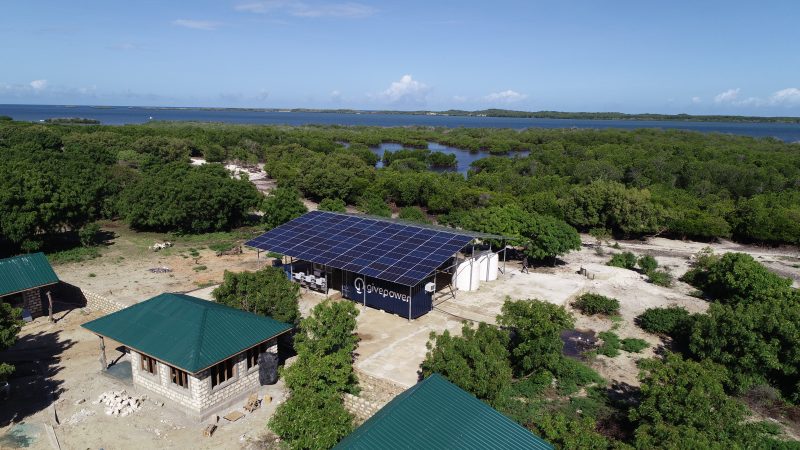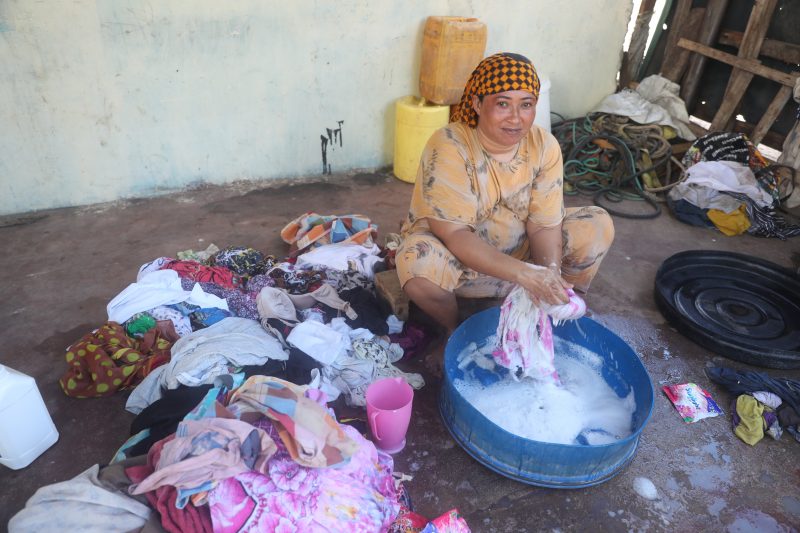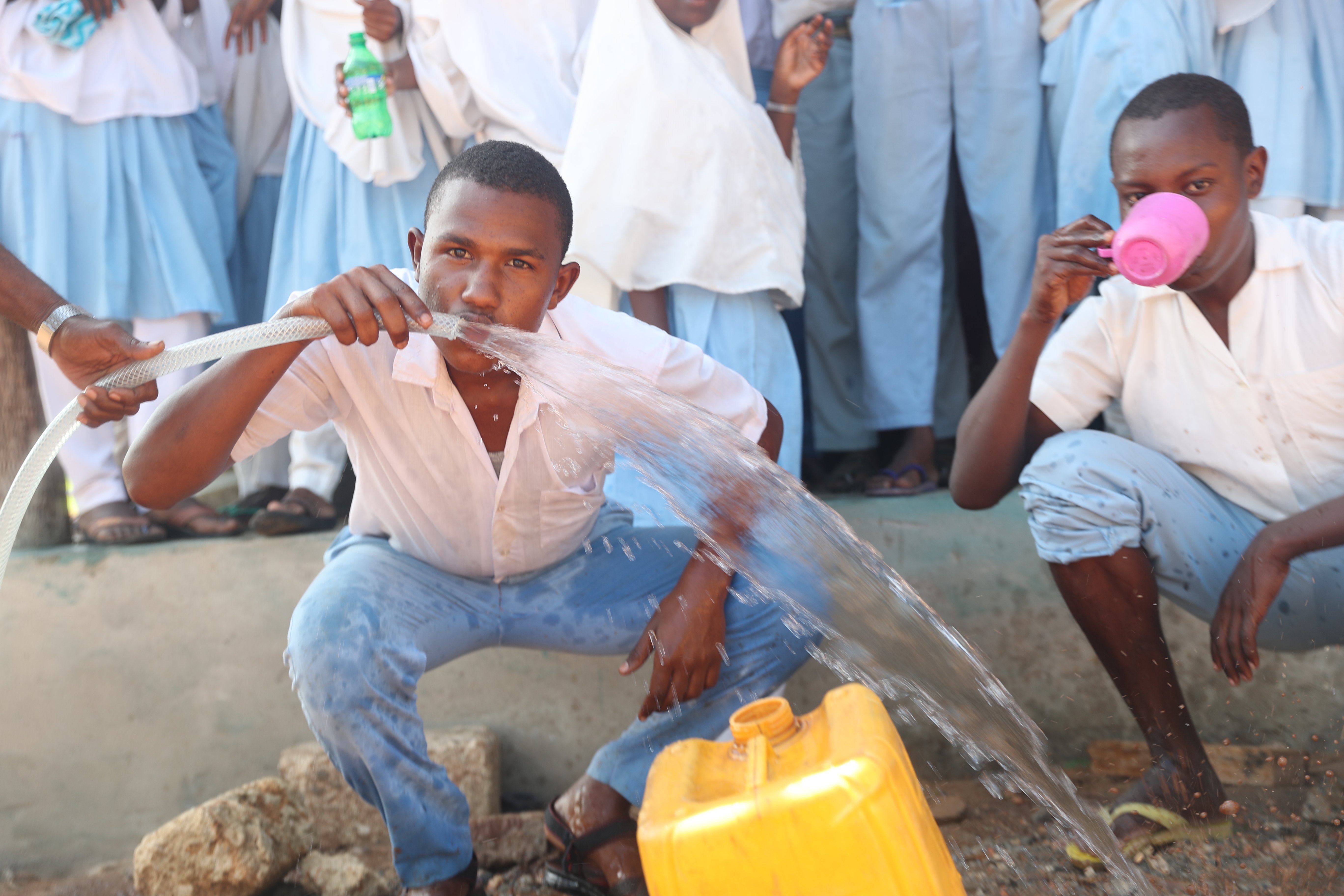- A new solar-powered device turns salt water into fresh drinking water.
- GivePower, the nonprofit behind the technology, is debuting the system in a coastal community in Kenya.
- Half of the world’s population could live in water-stressed areas by 2025. The ocean offers an abundant source of water if the salt-removal process can be made energy- and cost-efficient.
- Visit Business Insider’s homepage for more stories.
People have been trying to turn seawater into drinking water for thousands of years, but the process is not usually energy-efficient or affordable.
At a newly constructed facility in Kenya, however, a nonprofit called GivePower is tackling that challenge using solar power.
The desalination system, which started operating in the coastal area of Kiunga in July 2018, can create 19,800 gallons (75,000 liters) of fresh drinking water each day – enough for 25,000 people.
“You have to find a way to pull water out of the ocean in a scalable way, in a sustainable way,” Hayes Barnard, the president of GivePower, told Business Insider.

Barnard hopes to scale the system up and open similar facilities around the globe to provide clean, fresh water for those who struggle to get it. Worldwide, one third of people don't have access to safe drinking water, according to UNICEF and the World Health Organization (WHO). By 2025, half the world's population is expected to live in water-stressed areas. Cities like Cape Town, South Africa; Chennai, India; and Beijing, China already face dwindling water supplies.
Limited water access keeps girls out of school
In 2013, Barnard started GivePower as a nonprofit branch of SolarCity, a solar-panel company that Elon Musk helped found in 2006. SolarCity merged with Tesla in 2016, but Barnard spun GivePower off as its own organization shortly before that.
The nonprofit mostly focuses on building solar-energy systems to provide electricity across the developing world. GivePower has installed solar grids in over 2,650 locations - primarily schools, medical clinics, and villages - across 17 countries, according to its website.

But regardless of whether or not a school has reliable electricity, limited access to fresh water keeps many girls out of the classroom. Women and children across Africa and Asia walk an average of 3.7 miles per day to fetch water, according to the UN Commission for Human Rights, and those treks take time and energy away from learning.
"So we thought the next thing would be to bring the water to them," Barnard said. "That's where this idea came from. Could we provide the most affordable, healthy, sustainable water? And at scale?"
Desalination technology is not new, but it uses high-power pumps and is notoriously energy-intensive (and therefore expensive). The solar-microgrid system that GivePower has created, however, can produce almost 20,000 gallons of fresh drinking water each day. It relies on Tesla batteries for energy storage, and it uses two parallel pumps so that the system can run at all times, even if one pump requires maintenance.
Locals pay about a quarter of one cent for every four cups (one liter) of water.
The world's looming water crisis

As sea levels rise, scientists expect salt water to infiltrate more fresh water sources in coastal areas. That situation isn't hypothetical in Kiunga: An ongoing drought that began in 2014 has forced residents to drink from salt water wells, even though doing so can cause kidney failure, according to GivePower.
Kiunga resident Mohammed Atik said in a promotional video about the GivePower project that the "salt water from the wells are not treated," which is why using it can lead to health issues.
"It was a really dire situation for this community," Barnard said. "Children walking around the community with wounds - lesions on their body from washing clothes in salt water."

Solar desalination around the globe
As GivePower's first project, the Kiunga facility cost $500,000 to build and took a month to construct. The organization hopes to generate $100,000 per year from the system, and use that to fund facilities in other places. Barnard's goal is to cut the construction cost down to $100,000 per plant in the future.
"We hope that one of these systems funds another additional sister system every five years," he said.
For now, the funding has come from corporate and private donations, along with a few corporate grants, including a $250,000 grant from Bank of America last year.

In the future, Barnard envisions smaller, modular-style solar desalination units that would use a single pump and a 15-kilowatt solar grid with three Tesla batteries. GivePower could combine the systems "like Legos" to scale up, Barnard said.
His team is already working on its next projects, in Haiti's Isle de la Gonâve and Mombasa, Kenya. Barnard wants those facilities to be up and running by the end of the year. GivePower is also scouting a site in Colombia for a similar future project.

In all of these places, one of GivePower's major challenges is establishing systems for distributing the fresh water that the plants create. Barnard hopes local people and organizations at each site will volunteer to distribute water, and nearby hospitals, schools, or hotels will pay to take several thousand liters each day. He also hopes some business-minded locals will buy the water and resell it in other towns.
"I want to create a system of water women, like there were milkmen in the 1960s," Barnard said. "It sounds funny, but water is a women's issue."
He added that the desalination plant has already spurred new economic activity in Kiunga. A group of women there started a freshwater clothes-washing business, Barnard said, and one man fills a tank with the water and drives it to nearby communities to sell.
"How awesome would it be if the women could make money off this water and their daughters are sitting in the classroom?" Barnard said.

